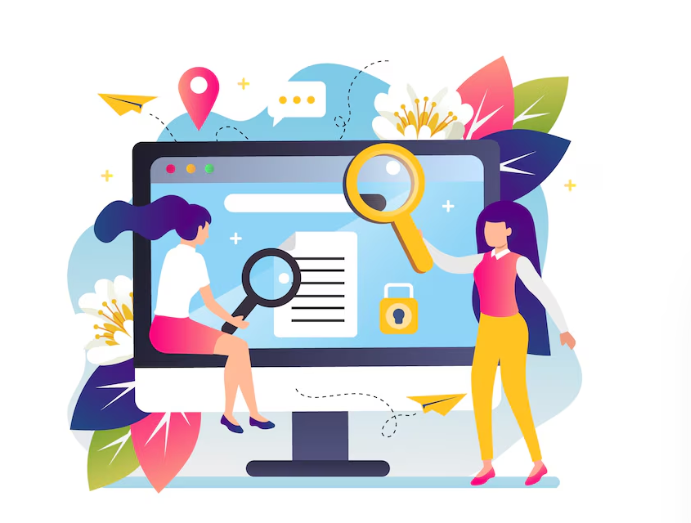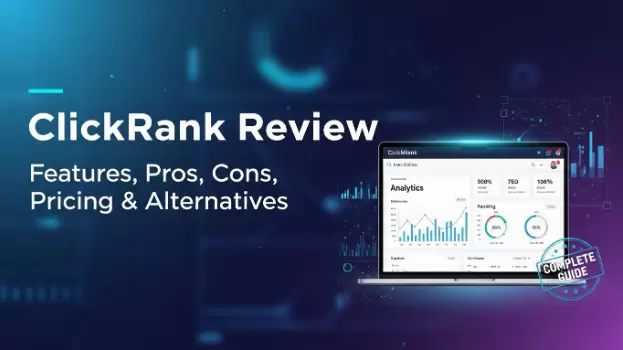Crawlability refers to the ease at which search engine bots go through your site’s content and navigate through the pages. Indexability is the capability of your website to get indexed (ranked) appropriately on the search engine results pages (SERPs).
Both go hand in hand and need to be optimized for improved rankings and higher organic visibility.
However, over time, websites get affected by issues like broken links, outdated content, internal redirects, etc. Such issues and misconfigurations make it difficult for search bots to crawl through your website and index it on the web.
In this article, let’s look at four steps you can take right now to optimize your website for better crawlability and indexability.
1. Conduct a Website Audit
A website audit provides detailed reports on your website’s structure, performance, and content to identify areas of improvement. This step provides SEO teams with actionable insights by highlighting opportunities for enhancement.
Specialized tools like an SEO crawler and a performance monitoring solution such as Google Search Console are necessary for performing a thorough audit. These tools benchmark your site’s performance and perform an in-depth analysis of your content and site structure.
The audit will reveal various technical issues related to broken links, missing metadata, site errors, and even content issues. Additionally, you can also get insights into the sitemap and robots.txt files to optimize them further.
It is essential to fix the sitemap and robots.txt files’ misconfigurations immediately as they list out important pages and directories that should be crawled and indexed and determine which search bots are allowed to analyze and rank your site.
2. Prioritize Pages Based on Impact
Each page on your website has a different level of impact on your messaging. Your product or service pages, for instance, are more important than a blog post written three months ago. The former attracts more traffic over time and aids conversion.
Simply put, the importance of a page can be determined by its impact on the site and business performance metrics. Site performance metrics include page dwell time, traffic, etc., and business performance metrics include sales, customer lifetime value, etc.
When the site audit is completed, it is crucial for SEO teams to rank the affected pages based on such parameters before starting to optimize them. Tools like Google Analytics and Semrush can help identify these key pages quickly.
It can be advantageous to convert each affected page as an individual task accompanied by a checklist highlighting the areas of improvement. This will make it easier to distribute the load and swiftly make the changes throughout the site.
3. Target Low Hanging Fruits First
Low-hanging fruits in SEO are quick fixes or enhancements that yield the most immediate and noticeable improvements in search engine rankings and website performance. Common low-hanging fruits in SEO include:
- Broken Links: Broken links hinder search engine bots and frustrate users. Use tools like Screaming Frog to identify and fix these links.
- Internal Redirects: Excessive internal redirects can slow down your site. Simplify redirect chains to enhance site speed and crawl efficiency.
- Large Images: Large image files can drastically slow down page load times. Compress images to improve site speed and user experience.
- Excessive CSS and JavaScript: Too much CSS and JavaScript can bloat your pages, making them slow to load. Minify these files to enhance performance.
Such edits don’t require much specialized (or expensive) tools, making them cheaper to implement at any time. SEO teams should pick these before moving on to more complex issues that require more time and expert assistance, such as:
- Improving site’s content: Including new keywords, adding new sections, and updating stats, facts, or opinions on blog posts.
- Enhancing the user experience: Speeding up the page loading, delivering a consistent experience across all devices, and improving navigation.
- Elevating site structure: Managing directories on the content management system (CMS) to ensure logical flow of content.
Keep in mind that the complex edits will take longer. Hence, it can be beneficial to wrap up the low-effort optimization opportunities and manually submit the pages for crawling before moving on to heavier tasks.
As usual, use tools like PageSpeed Insights and Google Search Console to track your progress while making enhancements across your website. This is crucial for ensuring your efforts are focused and bring the desired results.
4. Use Automation and AI Tools
Manually making all the site optimizations for the search bots to improve crawlability and indexability can be time-consuming. Additionally, since these changes require attention to detail, the likelihood of human errors and avoidable mistakes increases.
Leveraging automation and AI tools can streamline those tasks and enable SEO teams to perform even the most complex tasksquickly.
Various SEO crawlers and keyword research tools help with scheduling site audits and generating keyword performance reports quickly. These solutions also notify the users about the most pressing issues discovered, allowing for faster resolution.
Moreover, large language models (LLMs), such as ChatGPT, can be used to generate content ideas, meta descriptions, and even rudimentary first drafts for posts and articles. Teams can greatly aid their research and content creation process to enhance their site’s credibility on search.
Advanced software like SEO writing assistants from companies like Grammarly and Semrush uses AI to suggest keywords, improve readability, and maintain a consistent tone of voice.
Incorporating these tools in your site audit and SEO workflows can increase the pace and quality of work. This will also help teams to remain agile and fix issues before they start affecting user experience or attract penalties from search engines.
Wrapping Up
Better crawlability and indexability enable search bots to analyze your website appropriately and rank it higher on the SERPs.
However, with time, websites can get affected by issues such as outdated content, broken links, and server issues that affect both crawlability and indexability.
To combat that, SEO teams need to perform in-depth site audits to uncover areas of improvement and start fixing the misconfigurations. It is beneficial to prioritize the pages based on things like traffic and revenue to make the overall process more impactful.
Additionally, it can be cost-effective to target the easy-to-implement repairs first, such as removing broken links from pages and compressing large images. These edits don’t require much time or any specialized software.
Finally, complex and more nuanced areas of improvement such as content updates, keyword modifications, etc., can be attended to. Leveraging automation and AI can greatly improve the quality and pace of the relevant action items.


 Table of Content
Table of Content










